Looking for some unique spa-like flair in your own bathroom? A Japanese soaking tub is the new it-style for modern bathrooms right now.
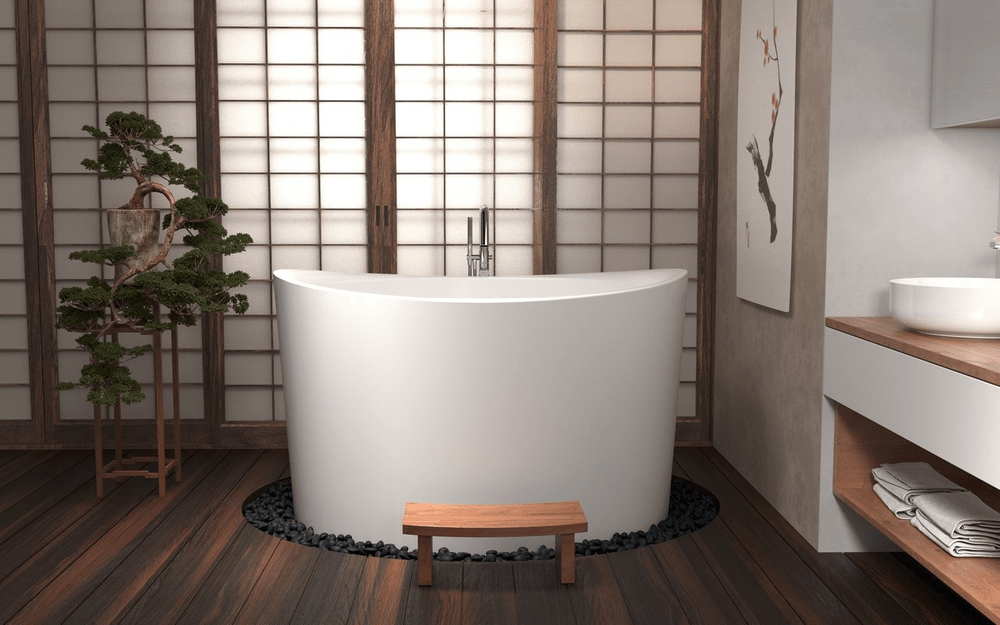
Japanese-style soaking bathtubs are one of the latest trends in bathroom fixtures to offer luxurious Asian-inspired relaxing space, but they are not a new thing. These small, deep tubs have been used as an alternative way of bathing in Japan for generations.
Suppose you’re interested in revamping your bathroom aesthetic with a new bathtub that is both functional and works as a centerpiece? You need to get yourself a Japanese soaking tub.
What Is a Japanese Soaking Tub?
The concept of Japanese-style bathtubs is different from the bathtubs many of us are familiar with. This style of bathtub is commonly round in shape with a bench designed for sitting compared to the elongated style of Western tubs designed for lying in.
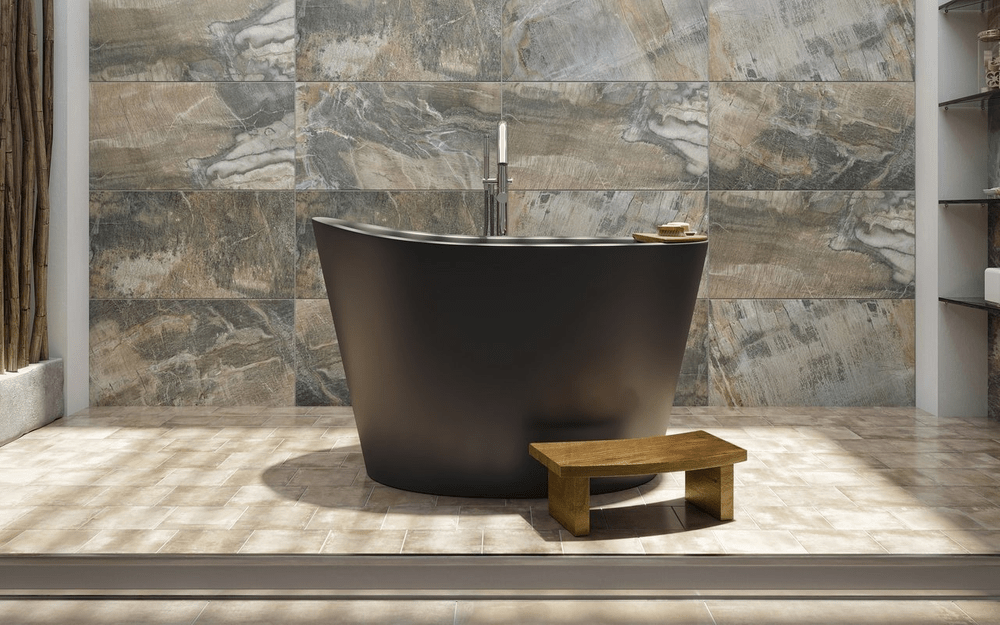
They are small and deep tubs designed to have as much of the body submerged in the water. They were not meant for washing but instead used for ritual bathing and relaxing, and warming the body.
This bathtub style is becoming popular for its distinct style, small footprint, and therapeutic benefits.
What Is a Japanese Soaking Tub Called?
The concept of Japanese bathing or soaking started with natural hot springs where families would soak. Then, during the Edo Era, communities began to operate local bathhouses where the hot spring water was piped in, and they drilled wells to bring the hot spring water to the surface.
During the same era, private type baths called “Sue Furo” emerged, allowing people to have heated baths at home where they could soak their bodies.
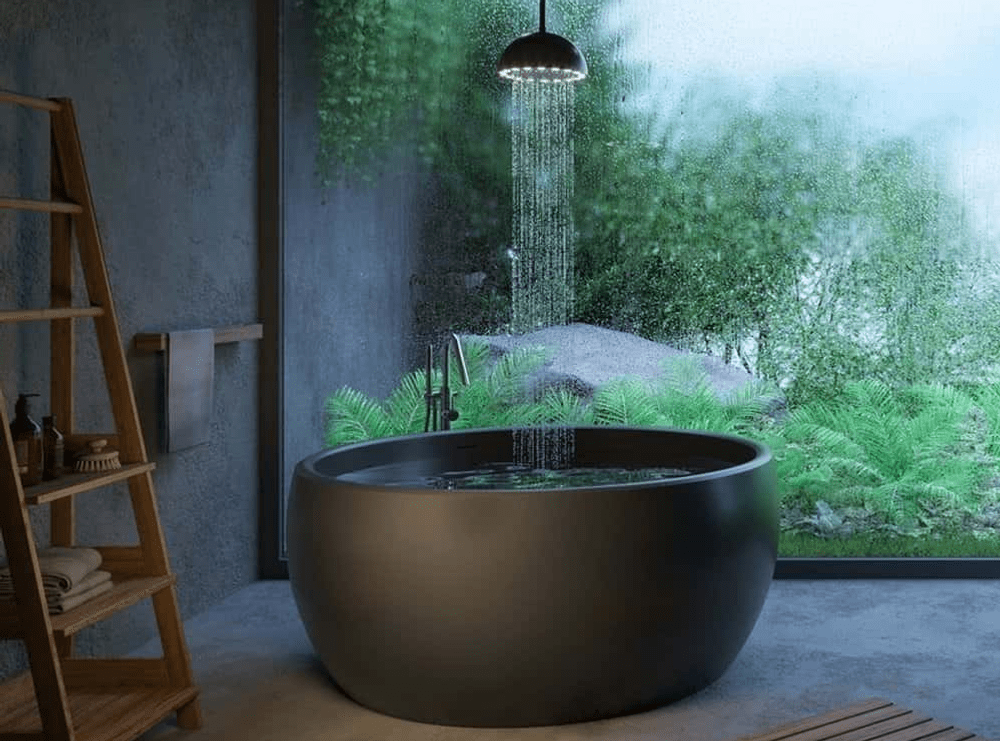
Later, in 1964, in preparation for the Tokyo Olympics, unit baths installed in small bathrooms now known as the Japanese soaking tub were first introduced in the country. In Japanese, this style of a soaking tub is called “ofuro” or “furo,” which translates to “bath.”
Traditional vs. Modern Japanese Soaking Bathtubs
Traditional soaking bathtubs were made of the same wood used to build sacred temples, fragrant cypress wood they called “Hinkoki.” It features a built-in seat or bench where bathers would sit comfortably while soaking.
But as the popularity of soaking bathtubs soared, so did the ideas and inspiration on how to make them.
Modern Japanese soaking tubs come in different sizes, styles, materials, and forms. Some were built with a small size as a single-person bath, while others have enough room to accommodate multiple bathers. They also come custom-built to fit anyone’s preferences.

Generally, a modern deep soaking tub can withstand higher water temperatures than traditional ones.
Is Using a Soaking Tub Worth It?
If you want to indulge in a relaxing soak that’s more indulgent than a typical bathtub, look no further than Japanese soaking tubs. It brings the idea of calmness, tranquility, and peacefulness to the comfort of your home, just what you need to counter a hectic modern lifestyle.
Reasons to Have Soaking Bathtubs at Home
Besides bringing a luxurious appeal to bathing, there are other reasons why a Japanese soaking tub would make an excellent addition to any bathroom setting.
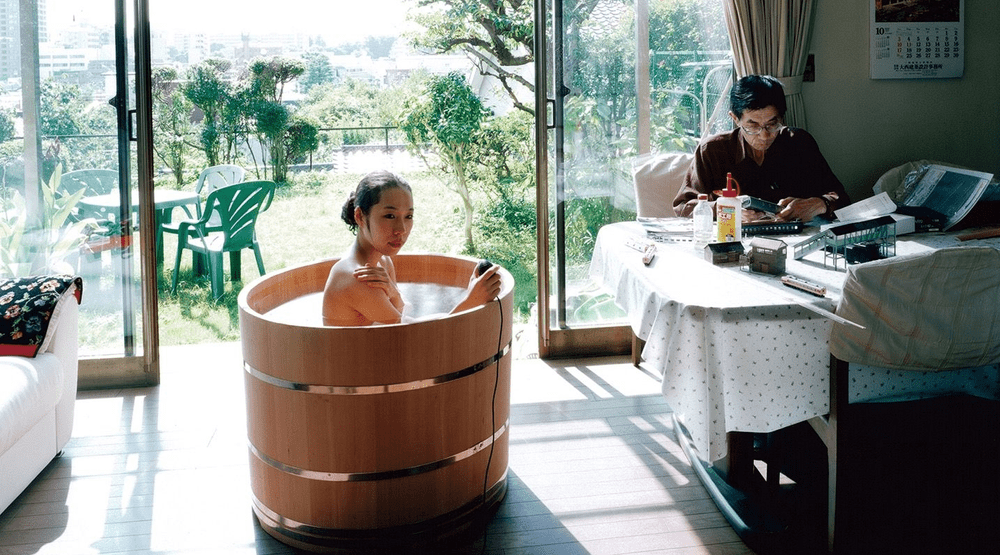
They Take Very Little Space
One of the known advantages of a deep soaking tub is its space-saving design. They take up as little bathroom floor space as possible without compromising comfort. So, if you have a cramped, small bathroom where a conventional tub can’t fit, get yourself a Japanese soaking tub instead.
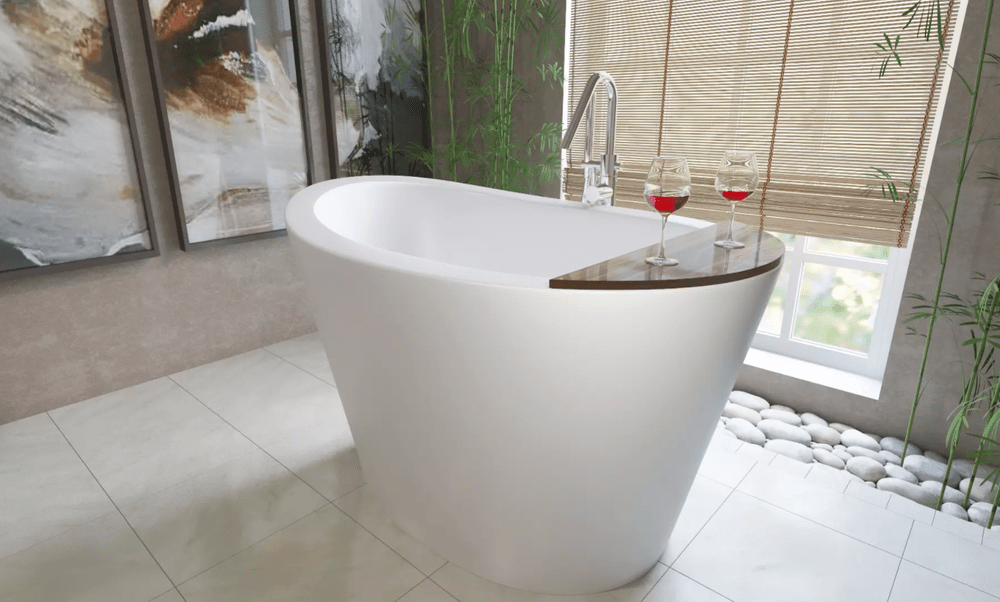
What the soaking bathtub lacks in length, it makes up for in height. You can get extra floor space but still get a lot of water to soak your entire body.
Uses Less Water than Conventional Bathtubs
Japanese soaking tubs are traditionally 27 inches deep. Meaning you sit on the bench inside the tub, and the water will come up to your chin. And without the length of conventional tubs, you can get a true all-over dip using less water. It’s simply more environmental and pocket-friendly that way.
Stylewise, the Options Are Endless
A deep soaking tub adds a wow factor to any bathroom space. While many conventional bathtubs look pretty similar, Japanese soaking tubs have evolved and now come in a wide array of materials.
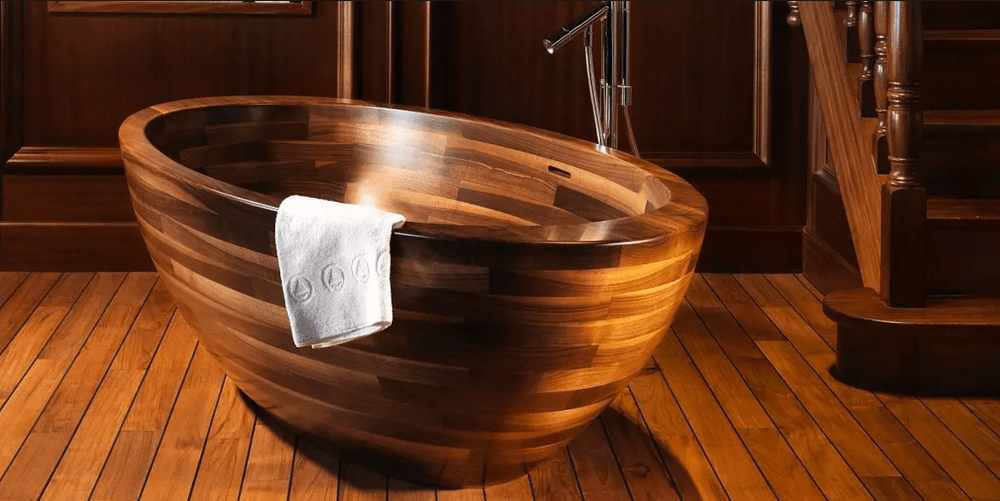
You can find a soaking tub made of various materials from cedar, stone, copper, stainless steel, and even acrylic.
Health Benefits of Soaking Tubs
Beyond the basic pleasures of slowly lowering yourself into a relaxing heat bath, enjoying yourself in a Japanese soaking tub has many therapeutic benefits. Just one soak will make you feel energized, rejuvenated, and ready the next day.
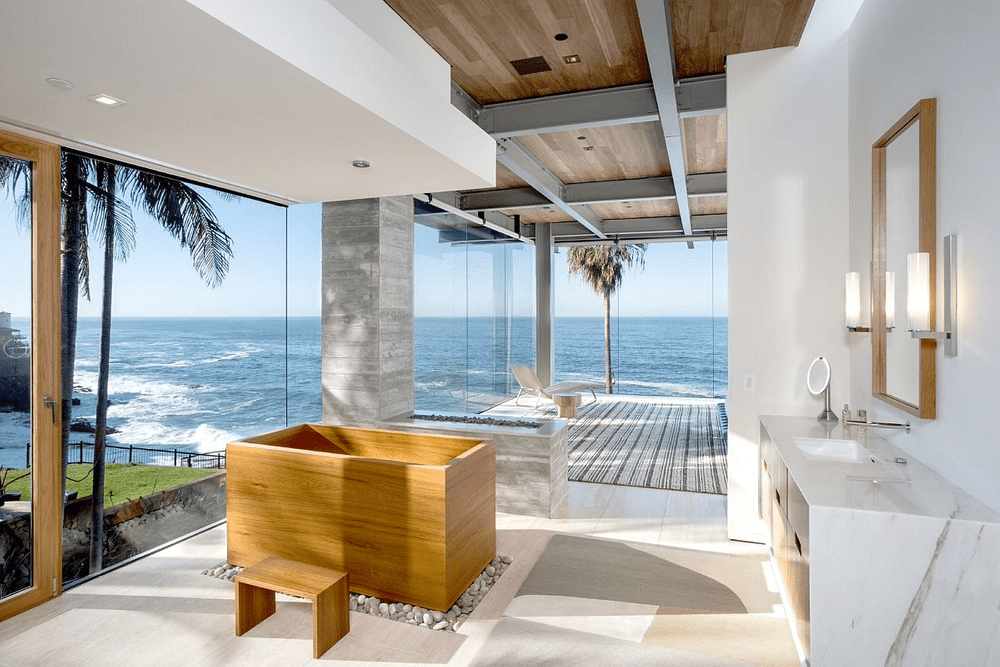
Improve Heart Health
Soaking in hot or warm water causes the heart to beat faster. Think of it as giving your heart a healthy workout. Your heart works faster when immersed in hot water, which helps it become stronger.
In the same way, the temperature and water pressure in your chest serve as a workout to your lungs, improving your breathing.
However, soaking in hot water is not recommended for people with a pre-existing heart condition.
Removes Muscle and Joint Pain
Soaking in hot water improves blood flow, and that has been proven to help reduce joint pain and inflammation and soothe sore and tight muscles.
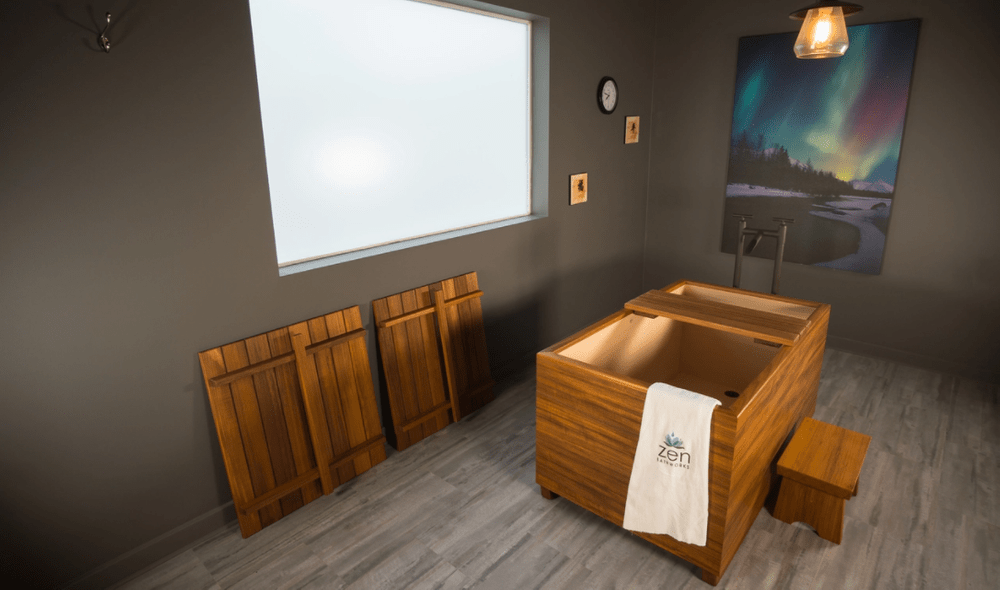
Helps Elevate Your Mood
Taking a warm bath is a fantastic stress reliever. It relaxes your mind and body in a way that showers can’t. The isolation, quiet, and comfort are enough to bring you in a better mood each time.
Reduce Headaches
Most headaches are caused by the blood vessels in the head narrowing down. Soaking in warm or hot water improves blood flow to relieve the pressure in those blood vessels, curing your headache.

Relieve Cold and Flu Symptoms
Breathing in hot steam has long been used to naturally relieve cold and flu symptoms. In the same way, the steam from the tub serves as a natural remedy if you got a cold or flu.
Helps You Fall Asleep
The stress relief and muscle relaxation you get from soaking in hot water help wash mental issues away. It can also help fight insomnia and promote better sleep.
Moisturizes Skin, Hair, and Eyes
Deep soaking in a Japanese tub ensures ultimate hydration of your body in all aspects.
Taking Japanese-Style Soaks at Home
The Japanese soaking tub is a fantastic way to relax and unwind. Travel to a bygone age of tranquility, ritual, and ceremony.

So, if you’re thinking of getting a Japanese tub, don’t buy it just to use it like you would any Western bathtub. Use your deep soaking tub as tradition requires, which means:
- Start with a cleansing shower.
- Deep fill it with water. It should come up over your shoulder or to your chin when seated.
- Heat the water to a temperature that’s as hot as you can handle.
- Add some Dead Sea salt (or Epsom salt) and some dry herbs or aromatics.
- If you want, play soothing music in the background.

Enjoy your soak, and afterward, don’t forget to moisturize after bathing. And make yourself comfortable and deepen your relaxation with a warm cup of aromatic green tea.
Fancy a Soaking Tub at Home? Here Are Some Gorgeous Tub Ideas
Most Japanese soaking bathtubs are freestanding tubs. And since they generally don’t require a lot of space to get installed, you can add one in your home even with limited space.

Here are some ideas and designs to inspire you:
- If you are looking to create a more traditional Japanese theme for your bathroom, a wooden bathtub adds a lot of beauty.
- Do you prefer contemporary decor? Stainless steel is perfect, and so are simple, clean acrylic bathtubs.
- If you want to adopt a more classic, vintage style, a copper tub has much class.
Another option is installing your Japanese soaking tub outdoors. You can choose the same way you choose a freestanding tub for indoor use. But you might want to consider getting a larger sunken bathtub.
And if the traditional round-shaped tub is not your preference, soaking bathtubs also come in a square version.
Now, if you want to turn your outdoor space into a sleek Oriental haven, transform the space by adding a full wooden deck to match your sunken bathtub. The only limitation for styling your Japanese soaking bathtub is your own imagination!
Final Thoughts on Japanese Soaking Tubs
With all the benefits of having and using a Japanese soaking bathtub, why wouldn’t you want one in your own home? It’s like a luxurious spa at home for the ultimate soothing of your mind, body, and soul.
Have you ever tried a dip in one of these soaking tubs? Would you want a tub in your home? Let us know your thoughts in the comments. We love hearing from you.




